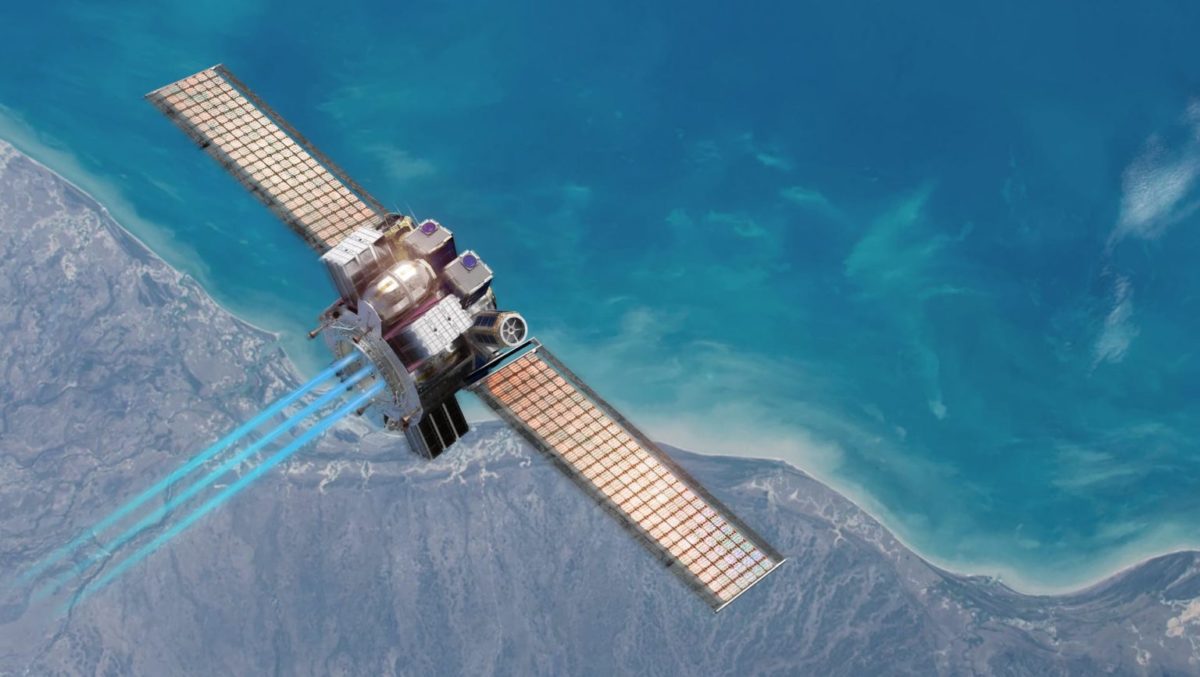Australia’s national science agency, the Commonwealth Scientific and Industrial Research Organisation (CSIRO), has revealed plans to team up with Adelaide-based Space Machines Company (SMC) to test its next-generation solar PV cell technologies.
The CSIRO will explore the potential of its perovskite-based, next-gen solar cells on SMC’s spacecraft Optimus-1, which is due to be launched next year by Gold Coast rocket company Gilmour Space Technologies.
Flexible thin-film solar is not a new concept, but it has thus far remained a niche area, with efficiencies and device lifetimes lagging those achieved in silicon PV or thin films deposited on glass. However, the CSIRO is pursuing the development of printable solar cells that are lightweight, thin and semi-transparent.
The science agency has been researching both organic PV (OPV) and perovskite solar cells, which are made from a mix of organic and inorganic materials, rather than traditional silicon solar cells. Printable “solar inks” are deposited onto flexible plastic films that can then be connected to make solar panels of significant size.
The CSIRO claims to have achieved efficiencies of greater than 19% on small-scale devices, while the pilot-scale, roll-to-roll printing lines have successfully fabricated 30-centimeter-wide flexible solar modules that can be cut to length. The weight and flexibility of the panels make then ideal for places where traditional solar panels are too heavy or bulky.
Popular content
Mei Gao, a CSIRO principal research scientist, said that the collaboration with SMC will be the first time the agency’s printable solar cells have been tested in space. She expects the results to provide benefits for more traditional applications.
“We will collect data from this mission to explore new applications of our technology,” Gao said. “Solar films are about making solar energy more accessible, on earth and in space.”
Solar is the primary energy source in space, but Rajat Kulshrestha, SMC's co-founder and chief executive, said space-graded rigid and foldable solar panels, the main alternatives today, are heavy and extremely expensive. While printable solar cells have been less efficient than the rigid versions, in the future they could be an order of magnitude cheaper than traditional space-grade solar cells and exceptionally volume efficient.
While the initial tests will use static printed cells that are fixed to the space craft’s surface, the CSIRO technology will be deployed alongside the more traditional solar panels so that their relative performance can be assessed.
“This is a fantastic example of collaboration between a privately funded space company and a government agency to develop the Australian sovereign capability in space,” said Kulshrestha. “We are flying traditional [solar panels], but we will be taking CSIRO panels as payloads to ensure that we can test them and actually also get a benchmark across existing performance compared to traditional solar panels. I think this will be great telemetry to get, to be able to then go to the next step and really start to work more closely in the future with CSIRO.”
This content is protected by copyright and may not be reused. If you want to cooperate with us and would like to reuse some of our content, please contact: editors@pv-magazine.com.



By submitting this form you agree to pv magazine using your data for the purposes of publishing your comment.
Your personal data will only be disclosed or otherwise transmitted to third parties for the purposes of spam filtering or if this is necessary for technical maintenance of the website. Any other transfer to third parties will not take place unless this is justified on the basis of applicable data protection regulations or if pv magazine is legally obliged to do so.
You may revoke this consent at any time with effect for the future, in which case your personal data will be deleted immediately. Otherwise, your data will be deleted if pv magazine has processed your request or the purpose of data storage is fulfilled.
Further information on data privacy can be found in our Data Protection Policy.